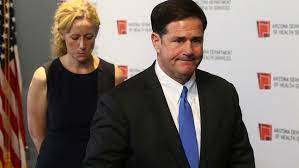Governor-elect Katie Hobbs will be Arizona’s next governor. Her 4-year term will officially begin at Noon on Monday, January 2, 2023. Given her track record and background, we expect to have a public health ally in the governor’s office for the next 4 years.
Governor-elect Hobbs spent many years serving as a social worker and then in the state legislature – often serving on health committees. This is the first time that I can think of when we’ve had a governor that has worked – at the grassroots level – on improving the social determinants of health.
Meanwhile, the state legislature is likely to be less friendly to many of our public health priorities than the executive branch. Both legislative chambers will have the same margins as the last year—31-29 Republican majority in the Arizona House and 16-14 Republican majority in the Arizona Senate.
Both chambers also held internal leadership elections—new Senate President will be Warren Petersen, President Pro Tempore T.J. Shope, Majority Leader Sonny Borrelli, and Majority Whip Sine Kerr. The Senate Health Committee will be chaired by T.J. Shope.
In the House, the new Speaker will be Ben Toma, with Leo Biasiucci as the Majority Leader. Committee chairs in the House have not been announced (as far as I know). If you have questions about other elections—statewide, federal or legislative—check out the Secretary of State’s website.
P.S. I’ll do a summary of the results of the ballot measures and what the results might mean for public health next week.






